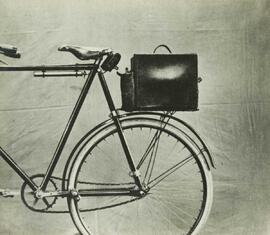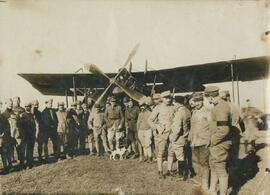Papers relating to his life and career, 1917-1963, principally comprising official correspondence with Lt Gen M Brocas Burrows, British Military Mission, Moscow, 1944-1945, Gen Mark Wayne Clark, US Army, 1943-1944, 1951-1952, Maj Gen Richard Henry Dewing, UK Army and RAF Liaison Staff, Australia, 1943-1944, Maj Gen Gordon Edward Grimsdale, Military Attaché andhead of Military Mission to Chungking, China, 1942-1943, AF Sir Roger John Brownlow Keyes, Bt, Director of Combined Operations, War Office, 1940-1942, Lt Gen Sir Henry Pownall, South East Asia Command HQ, 1944-1945, Lt Gen Sir Harold Redman, British Joint Staff Mission, Washington DC, 1943-1944, AF Sir James Somerville, Commander-in-Chief Eastern Fleet, 1943-1947, and Maj Gen Sir Edward Spears, Minister to the Lebanon, 1940-1944, and Lt Gen Albert C Wedemeyer, US Army, Deputy Chief of Staff; South East Asia Command, 1944; personal correspondence with and about FM Lord Alanbrooke, 1946-1947, 1957-1963, FM Sir Claude John Eyre Auchinleck, 1941-1961, and FM Archibald Percival Wavell, Viscount Wavell of Cyrenaica and of Winchester, 1943-1946; official andpersonal correspondence with Dwight David Eisenhower, 1942-1965, and AF Louis (Francis Albert Victor Nicholas) Mountbatten, 1st Earl Mountbatten of Burma, 1943-1954, 1960-1964; correspondence with publishers and colleagues, including Gen Sir Richard Nugent O'Connor; papers relating to India, 1947-1951, including his correspondence as Chief of Staff to Mountbatten, 1947, notes on interviews with Jawaharlal Nehru and Mahomed Ali Jinnah, 1947, letters describing the political situation in India, 1947-1948, and correspondence concerning compensation for Indian Government servants, 1948-1951; correspondence concerning the proposed defence reorganisation, 1955-1963; papers relating to his service as Secretary General, NATO (North Atlantic Treaty Organization), 1952-1957, including his official progress reports, 1952-1956; newspaper cuttings, statements to the press and texts of speeches and broadcasts, 1952-1957; papers relating to his memoirs, [1940-1960] including correspondence with publishers, 1960-1961, and colleagues, 1957-1960, notebooks, 1940-1960, and drafts and proofs, [1960]. newspaper cuttings, 1943, 1948, 1951-1952, 1957; texts of speeches, 1943-1958; correspondence relating to operations in Somaliland, 1917-1920; notes and papers relating to his studies at Staff College, Quetta and RAF Staff College, 1922-1924. Papers relating to Rt Hon Sir Winston (Leonard Spencer) Churchill, 1940-1965, including personal correspondence with Churchill, 1940, 1943-1945, 1947-1964; correspondence relating to Churchill's memoir The Second World War (Cassell, London, 1948-1954), 1946-1956, including correspondence relating to Dieppe Raid, Aug 1942, dated 1950, and galley proofs, [1948-1954]. Printed material, 1941-1945, 1947, 1951, notably including copies of telegrams sent by Winston Churchill as Prime Minister, 1941-1942; minutes of Chiefs of Staff meetings, 1943-1944; minutes of Combined Chiefs of Staff meetings, 1943, 1945.



